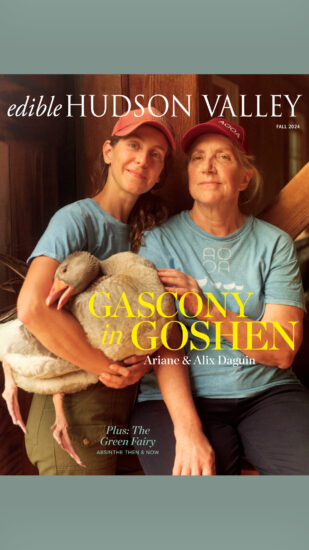Oh, it’s not creepy at first.
As you skitter down the rubble-strewn slope to the mouth of the cave, the daylight remains strong and you can still hear comforting above-ground sounds: birds, airplanes, a car engine. It feels OK.
But as you walk deeper into the cool, stony darkness, the brightly lit mouth of the cave contracts behind you like a pupil, becoming steadily smaller as it grows more distant. When you pass the bend that lies midway through the cave, that circle of light eclipses into a cat’s eye. You’re thinking: How long would it take me to run back out, you know, if I really had to. And there’s a smell down here—not terrestrial, flinty, more mineral. You’re not on earth anymore, and, judging from the graffiti, you may not be alone.
The Dobbs Ferry cave is a vestige of Hudson Valley brewing history; it lies forgotten behind Hudson River Landing, a 1920s-era building at 145 Palisade Street. The cave predates the present structure by some 70 years. It was excavated in 1853 by Peter Beigen, who used it for lagering the beer that he made onsite at Beigen Brewery.
Lager is a beer style that, like Beigen, came from Bavaria. When Beigen arrived during the massive wave of German immigration of the 1820s–1870s—an intake that doubled the U.S. German population and brought pretzels to New York City streets—he was leaving a culture that already excavated caves for beer. Lagers had been brewed in Bavaria since the 1500s, but the fizzy, easy-drinking beer was a gimme on these shores. New York was full of big, hot cities, and lagers are chuggable. Budweiser is a lager.
Unlike ale, which is brewed at warm temperatures, lager demands cold temperatures for brewing and storage. Before the first refrigerated brewery (Spaten in Munich, 1873), brewers protected their lager against summer by storing it underground in the cool, dark earth.


A photo of the Beigen Brewery in the 19th century depicts a bustling scene: Giant wooden barrels lie neatly stacked in the courtyard awaiting transport by horse and cart. The building itself was gaily decorated with gingerbread trim that would not have looked out of place in Beigen’s Bavaria. Not pictured, along Palisade Street, was a rank of modest housing for the brewery’s largely German-American workforce. In keeping with then-current trends in Bavaria, Beigen installed a pavilion over his cave where German expatriates could dance to oom-pah bands and drink Beigen beer.
The site was auspicious for brewing. Not only did it back onto the Hudson River for swift transport to thirsty cities, but the property also included access to the then-pristine water of Wicker’s Creek. There was no historical Wicker. The name comes from the phonetic anglicization of Weckquaesgeek, the Native American tribe who inhabited this land long before Henry Hudson sailed by it in 1609. The creek remains on the property, as do Native American archeological sites dated to before the Common Era.
After changing ownership a few times, the brewery was shuttered by Prohibition, never to reopen. When its current owners purchased the site, the cave’s opening was unsealed. To discourage vandals, years of moldering landscaping debris was piled high in its 14-foot-tall mouth. Nevertheless, the building’s current GM, Florim Bajraktari, has heard the reminiscences of multiple Dobbs Ferry residents saying that, as teenagers, they resorted to the cave for illicit sex.
Plans for the cave are evolving. Currently, it has only one mode of egress, which makes it a firetrap (and bars it from public use). Bajraktari is considering installing another entrance at the rear of the cave and renting it as an unusual venue for parties. He’s also considering opening it to local brewers so that the cave can once again be filled with Hudson Valley beer.
Looking for an unusual event site? Fresh Company Catering in Garrison (@ _freshcompany) can help. Find inspiration in their gallery.
This story was originally published to Edible Westchester in September 2018.



